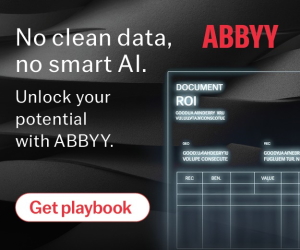
By: Tony Lee, Chief Technology Officer, Hyperscience
When facing economic uncertainty, investment of time, money and effort in innovation and technological advancement may be the last thing on an organization’s mind. Yet, investing in the future can actually provide a competitive edge, improve performance and create a more agile workforce. In the mortgage industry specifically, which is experiencing a 22-year demand low, lenders can take advantage of this respite by making optimizations to rules-based, behind-the-scenes, legacy processes a top priority and improve how work flows through an organization. Digital transformation efforts can future-proof mortgage companies from unpredictable upswings or talent shortages that can create bottlenecks and backlogs.
Here are three ways that digital transformation efforts can greatly benefit the mortgage industry:
- Say Goodbye to Delays: The current mortgage approval process is lengthy, taking anywhere from 30 days to several months. Manually reviewing and processing information from credit reports, W-2s, bank statements, and other forms adds to the complicated and slow approval process. Missing or incorrect information is often cited as a prevailing reason for loan delays—the wrong information on a new application at the start of the process can create time-consuming delays as the process moves slowly forward.
By introducing and improving back-office processes, lenders can drastically shorten turnaround times—whether in high-demand times or slower periods like the one the industry currently is in. Intelligent document processing (IDP) increases accuracy in applications, capturing the information correctly and ensuring it is not lost or misrepresented. Built on machine learning and artificial intelligence, IDP can more accurately and automatically classify documents and extract critical information needed for decision-making better than inflexible legacy technology.
- Improve Workflows While Saving Money: Unsurprisingly, paperwork is a recurring pain point surrounding mortgages. In fact, last year the National Association of REALTORS Research Group (NAR) discovered paperwork was among the top three most difficult parts of the home buying process. Though streamlining the number of forms and required information will likely not happen in the foreseeable future, improving how information flows within an organization once it’s received is attainable.
Firms relying on rules-based robotic processing automation (RPA), for example, may find themselves needing extensive monitoring by employees. But gone are the days where lenders must rely on slow, error-prone manual processes to extract data trapped within documents. IDP and intelligent automation can remove these repetitive, manual, tedious tasks from the lenders. Dedicating the time and resources today to improve workflows for current and future employees lays a foundation dedicated to process improvements—as well as savings in cost and time.
- Spend More Time with Customers: Purchasing a home is a significant milestone for individuals—and a highly stressful one. Humanizing the experience and being a partner to the buyer can greatly enhance the experience and lead to continued or even new business. For lenders facing ebbs and flows in demand, introducing automation not only streamlines the process, but it frees up valuable time to spend on delivering first-class customer service experiences. It also serves as additional help amid a tighter workforce across the processing, underwriting and closing teams.
To truly turn the tides and prepare for serving the customers of tomorrow, organizations must go beyond small updates to legacy technology and surface-level transformations for quick wins that improve customer satisfaction—they aren’t sustainable and cost more in time and money in the long run. However, embracing intelligent automation and document processing can help lenders do just that and more.
To more effectively and efficiently serve customers, it’s critical to lay a strong foundation of back-office processes and technology innovations.
If you liked this article, please sign up to RPA Today! Registrants will receive our free weekly RPA newsletter updating you on the most recent developments in the Robotic Process Automation, Intelligent Automation and AI space. In addition to news updates, we will also provide feature articles (like this one) with a more in-depth examination of RPA issues for end users and their enterprises.


